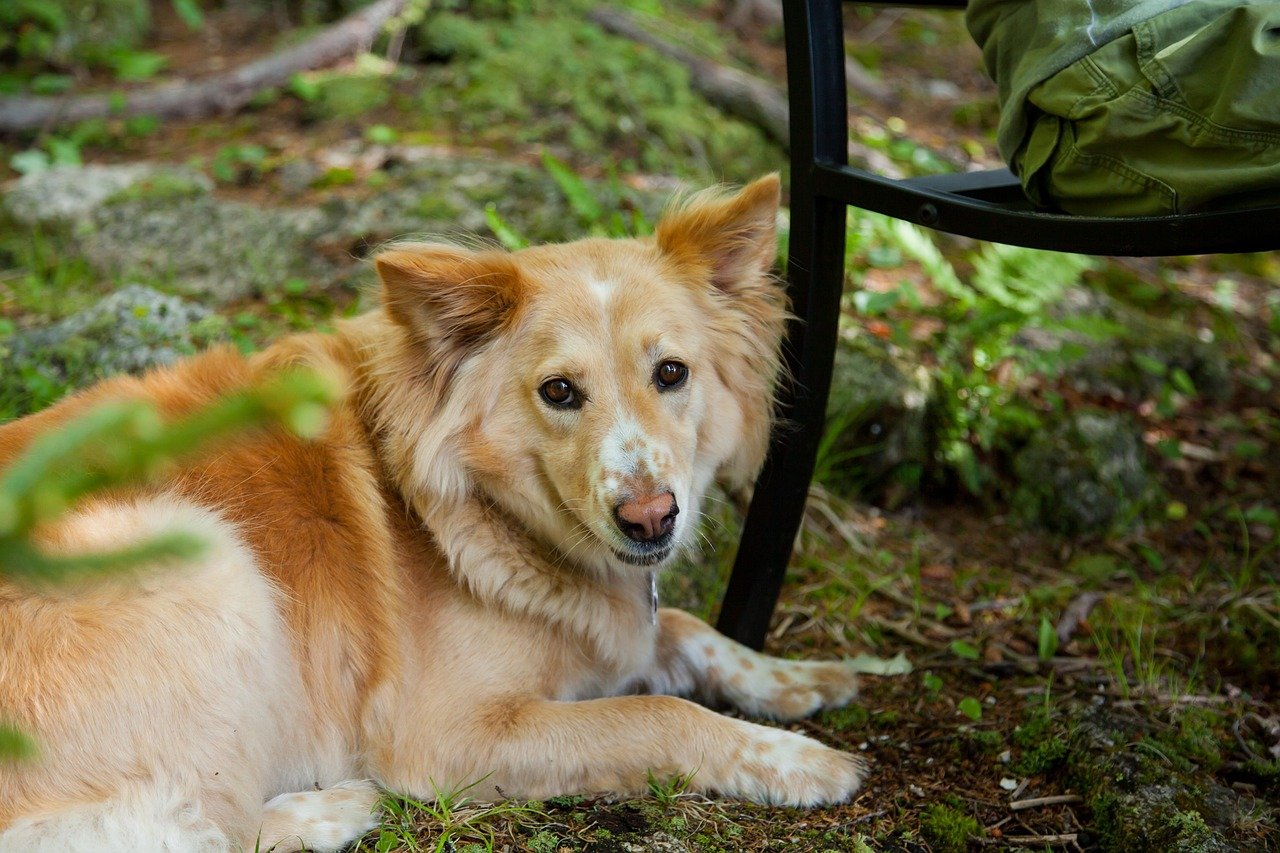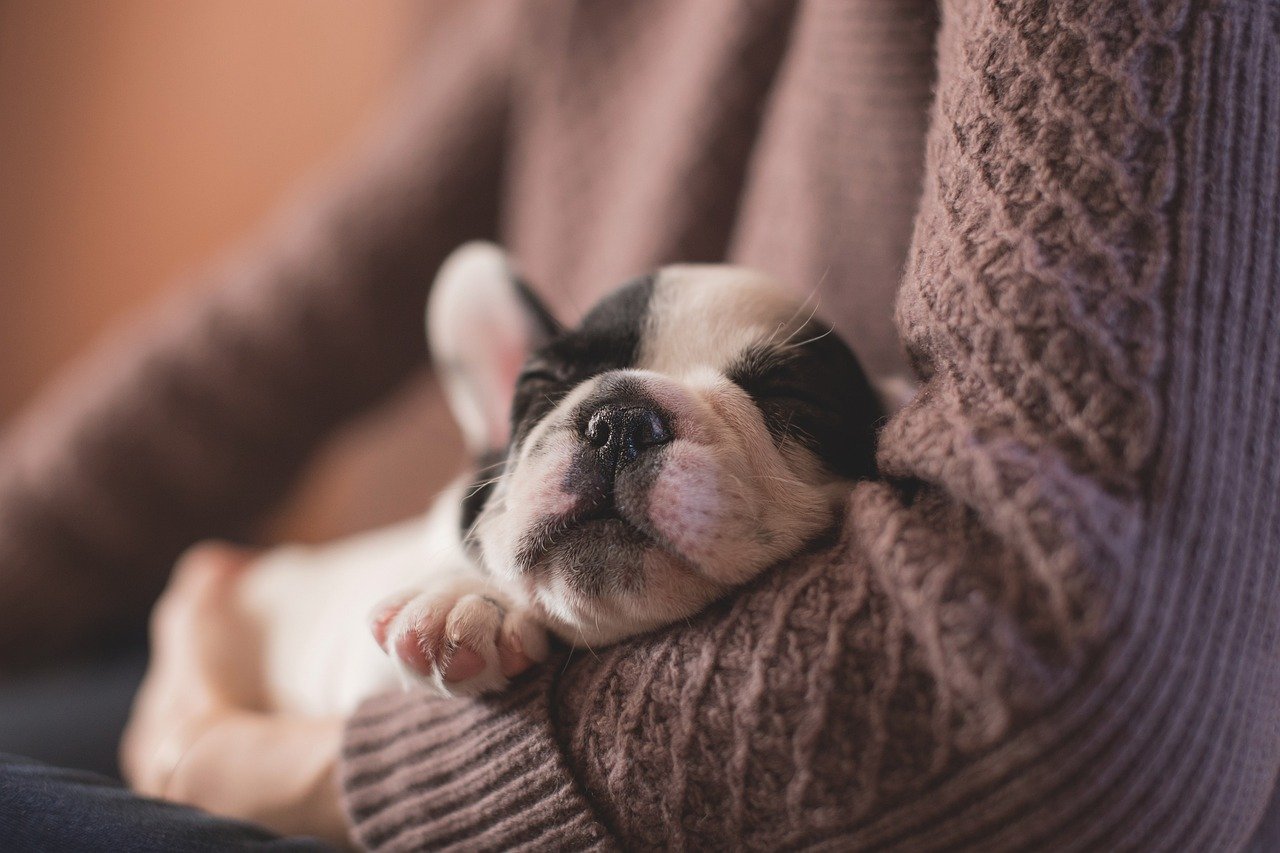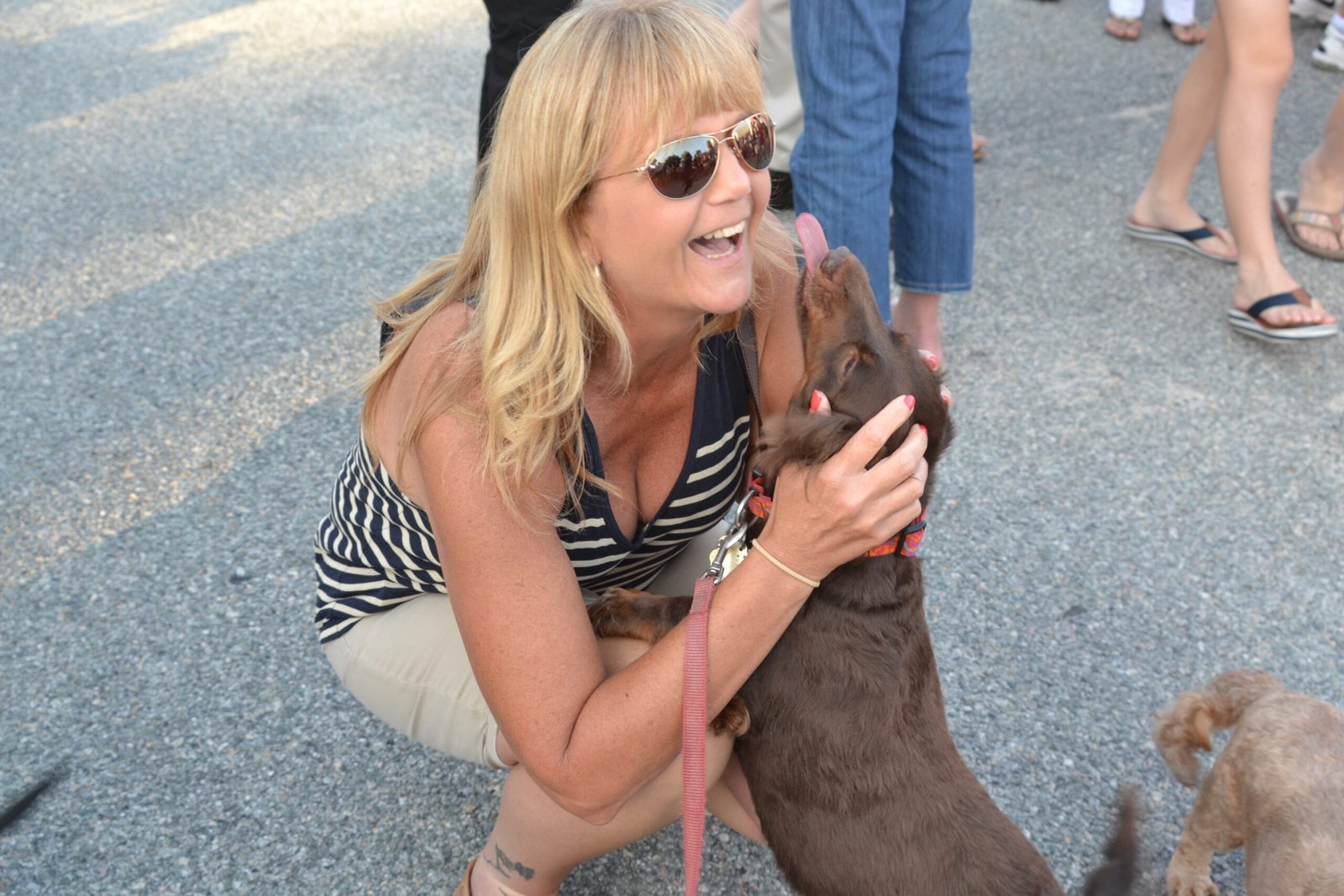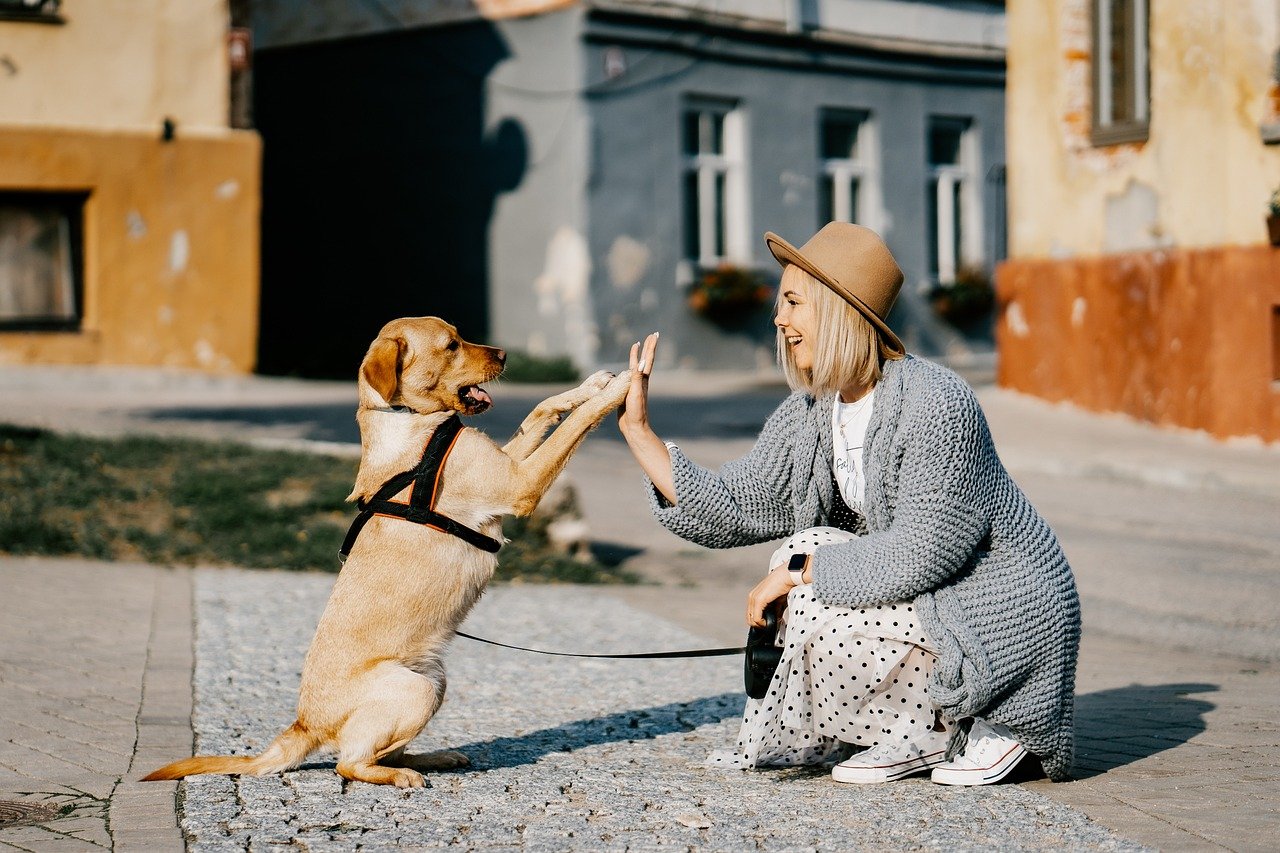Ever wonder how much your dog really trusts you? From following you everywhere to sleeping soundly by your side, dogs have unique ways of showing deep trust. These signs often include eye contact, relaxed body language, and a wagging tail that says, “I feel safe with you.” On the flip side, if your pup avoids touch or hides, it might mean trust still needs building. Understanding these signals helps you strengthen your bond and create a relationship based on mutual love and security.
They Greet You With Tail Wags and Happy Wiggles
There’s nothing quite as heartwarming as coming home to a dog who wags their tail with such joy it seems their whole body is dancing. That explosion of energy isn’t just excitement—it’s a clear sign your dog trusts you. Dogs who feel safe around their owners show uninhibited, full-body wags, sometimes even wiggling their entire back ends. This isn’t reserved for just anyone; it’s a special greeting for people they consider family. If your dog races to the door, tail swishing, perhaps making happy little noises, you’ve earned their deepest trust. The tail’s position matters, too—a relaxed, mid-height wag signals comfort, while a tucked tail can mean fear. Those joyful tail wags are your dog’s way of shouting, “I’m so glad you’re home!” It’s a daily reminder that your bond is strong, and your dog feels secure by your side.
They Make Eye Contact Without Hesitation

Eye contact can feel intense, even between humans, but for dogs, it’s a sign of deep trust. When your dog gazes into your eyes without fear or anxiety, they’re showing vulnerability and affection. This is especially true if their eyes are soft, their eyebrows relaxed, and their body language calm. Dogs that trust you will hold your gaze, perhaps even leaning in for a little extra closeness. This isn’t the same as a hard stare, which can be challenging or threatening among dogs. Instead, it’s a gentle, loving look that says, “I feel safe with you.” Some studies have even shown that mutual eye contact between dogs and their humans releases oxytocin, the “love hormone,” in both. So, the next time your pup looks up at you with those big, soulful eyes, know that you’re sharing a moment of genuine connection.
They Sleep Near You or On You

Sleep is when animals are most vulnerable, so where your dog chooses to snooze speaks volumes about their trust. If your dog curls up at your feet, on your lap, or snuggles beside you in bed, it’s a strong sign they feel protected and safe. Some dogs will even sprawl out on their backs with their bellies exposed, which is the ultimate display of trust. They know you won’t harm them while they’re defenseless. This closeness during sleep is like an unspoken promise—they’re comfortable letting their guard down around you. Even if your dog prefers to sleep nearby rather than on you, their choice to remain close is their way of saying, “I trust you with my safety.” These moments, quiet and unguarded, are some of the most precious signs of a dog’s love.
They Bring You Their Favorite Toys
When your dog trots over with a slobbery toy and drops it at your feet, they’re not just asking to play—they’re sharing something they treasure. Dogs instinctively guard resources they consider valuable, so offering you their favorite toy (or sometimes even their food) is a sign of ultimate trust. It’s their way of saying, “This is important to me, and I want to share it with you.” For many dogs, playtime is also a way to bond and express affection. If your pup initiates games, nudges you with their toy, or waits patiently for you to throw it, they’re inviting you into their world. This act of sharing, however small, is one of the purest ways dogs show they trust you to join in their joy.
They Follow You Everywhere (Even to the Bathroom!)
If you’ve ever tripped over your dog while moving from room to room, you know how loyal—and attached—they can be. Dogs that trust their humans often become their little shadows, following them from the kitchen to the bathroom and everywhere in between. This isn’t about separation anxiety; it’s about wanting to be involved in your life. Being near you makes them feel safe and included. Sometimes, this constant companionship can seem a bit much, but it’s a powerful sign your dog sees you as their pack leader. They rely on your presence for comfort and reassurance. So the next time your dog camps out on the bathroom rug while you shower, remember: it’s their way of saying, “I trust you—and I want to be with you, always.”
They Show You Their Belly

Few things are cuter than a dog rolling over, paws in the air, belly exposed. But this move isn’t just adorable—it’s a vulnerable position that signals absolute trust. By exposing their sensitive underside, your dog is telling you, “I know you’d never hurt me.” Some dogs will even nudge your hand, inviting a belly rub, which is their version of asking for affection. If your dog does this often, especially during quiet moments together, it means they’re completely at ease in your presence. It’s a little gesture with a big message: your dog trusts you enough to let their guard down and ask for love.
They Relax When You’re Around

Pay attention to your dog’s body language when you’re near. A dog that trusts you will have a loose, wiggly body; their mouth may be slightly open, and their ears relaxed. You might even notice them sighing contentedly or stretching out for a nap. Dogs are experts at reading human emotions and energy, and when they sense you’re calm and caring, they mirror that feeling. If your dog can settle down in your presence and shows no signs of stress—like yawning, lip licking, or pacing—it’s a sure sign they feel safe. This relaxed state is the foundation of trust, built from countless positive experiences together.
They Listen to Your Commands
Training isn’t just about obedience; it’s about communication and mutual respect. Dogs who trust their owners are more likely to follow commands, even in distracting environments. If your dog comes when called, sits when asked, or responds to your cues with enthusiasm, it’s a sign they respect and trust your leadership. This willingness to listen is built through positive reinforcement and consistent, gentle guidance. When your dog trusts you, learning becomes a game, not a chore. They want to please you and are eager to engage. It’s a powerful indicator of a healthy, trusting bond.
They Lean Into You or Rest Their Head on You
Physical contact is comforting for dogs, just as it is for humans. When your dog leans their body against yours or rests their head in your lap, it’s a way of seeking closeness and affection. This simple gesture means, “I trust you to support me, literally and emotionally.” Dogs who are anxious or unsure tend to keep their distance, so these loving nudges are a positive sign. Sometimes, your dog might even press their whole body against your side, soaking up your warmth and presence. It’s a quiet reminder that trust is often built in the smallest, sweetest moments.
They Show Excitement When You Come Home
The moment you walk through the door, does your dog greet you with uncontrollable joy? Jumping, barking, spinning in circles—these are all signs your dog has missed you and trusts you to return. This reunion ritual, no matter how many times it happens, never gets old for your pup. They’re genuinely happy to see you, and their excitement is proof of a deep, lasting bond. Even if you were gone for just a few minutes, your dog’s enthusiastic welcome is their way of saying, “Life is better with you.” That kind of devotion is built on trust and love.
They Lick You Affectionately

Licking is a multi-purpose behavior in dogs, but when done gently, it’s usually a sign of affection and trust. Puppies lick their mothers for comfort and bonding, and adult dogs continue this behavior with their favorite humans. If your dog gives you loving licks—on your hands, face, or even your feet—they’re showing they feel safe and close to you. It’s their version of a kiss, a way to reinforce their connection. While excessive licking can sometimes signal anxiety, those gentle, happy licks are your dog’s way of saying, “I love and trust you.”
They Bring You “Gifts” (Even Odd Ones)
Has your dog ever dropped a random object at your feet—a sock, a stick, or even something less pleasant? As strange as it seems, this is a dog’s way of sharing and showing trust. In the wild, canines share food or prized finds with their pack. At home, your dog might bring you their favorite toy or whatever they find interesting. These “gifts” are their way of including you in their world, a gesture reserved for those they trust the most. So, even if it’s just a chewed-up slipper, accept it as a compliment—you’re part of the inner circle.
They Respond to Your Emotions

Dogs are incredibly intuitive and often pick up on our moods. If your dog comes to comfort you when you’re sad, sits quietly by your side when you’re stressed, or celebrates with you when you’re happy, it’s a sign of trust and empathy. They’re tuned in to your emotional state and want to be close, whether you need cheering up or someone to share your joy. This emotional connection isn’t automatic; it’s built over time through shared experiences and mutual understanding. When your dog mirrors your feelings, it means they trust you and care deeply about your well-being.
They Turn Their Back to You
It might seem odd, but when a dog turns their back on you or sits with their back facing you, it’s actually a sign of trust. In the animal world, turning your back means exposing yourself to potential danger. If your dog does this, it shows they have no fear you’ll harm them. Sometimes, they might even lean against you while facing away, enjoying your presence while keeping an eye on the rest of the world. This subtle behavior speaks volumes about the trust they have in you—a silent, powerful declaration of comfort.
They Let You Touch Their Paws
Many dogs are sensitive about their paws, as these are vulnerable areas. If your dog lets you handle their paws without pulling away, nipping, or showing discomfort, it’s a strong indication of trust. Whether you’re trimming nails, cleaning between their toes, or just giving their paws a gentle squeeze, their relaxed acceptance means they feel safe. Not every dog will tolerate this right away—it often takes time and positive experiences. But when they finally let you touch their paws without worry, it’s a milestone of trust in your relationship.
They Avoid Eye Contact or Turn Away

On the flip side, a dog that consistently avoids eye contact or turns their head away may not fully trust you. This behavior can signal discomfort, fear, or even past negative experiences. Dogs use avoidance to communicate unease, and if your pup rarely looks at you or seems to flinch when you approach, it’s a sign that trust hasn’t been fully established. Building trust takes time, patience, and lots of positive interactions. Remember, a gentle look can go a long way in helping your dog feel more secure.
They Flinch or Move Away When Touched
If your dog pulls away when you reach out to pet them, especially if it happens frequently, it could mean they’re not comfortable or don’t trust you yet. Flinching, shrinking back, or even tensing up at your touch are all red flags. This is especially true if your dog was adopted from a difficult background or has experienced trauma. Building trust requires gentle, consistent handling and respect for your dog’s boundaries. Over time, with love and patience, even the most wary dogs can learn to trust again.
They Growl, Snarl, or Snap
Aggressive behaviors like growling, snarling, or snapping are clear indicators of fear or discomfort. While some dogs may react this way when startled or hurt, frequent displays of aggression around you suggest a lack of trust. These behaviors are your dog’s way of saying, “I don’t feel safe.” It’s important not to punish them for communicating their discomfort; instead, focus on building positive associations and earning their trust through kindness and consistency.
They Hide or Withdraw From You
A dog that hides under furniture, avoids your presence, or withdraws from interaction is likely feeling insecure. This can happen with new dogs, dogs in a new home, or those who’ve experienced neglect or abuse. Hiding is a coping mechanism for fear and uncertainty. It’s heartbreaking to see, but with patience, gentle encouragement, and positive reinforcement, you can help your dog feel more comfortable and start building trust.
They Ignore Your Commands or Avoid Handling
When a dog repeatedly ignores your commands or resists being handled, it may be a sign they don’t trust you yet. This isn’t about stubbornness; it’s about feeling unsure or unsafe. Dogs need to feel secure before they’ll willingly listen or allow handling, especially in situations that make them nervous. Building a trusting relationship involves consistent, positive training and lots of encouragement. As your bond grows, you’ll see your dog become more responsive and open to interaction.
Recognizing the signs of your dog’s trust can really deepen your connection. Whether it’s leaning on you, making eye contact, or happily following you around, these behaviors show just how safe they feel with you. And if the signs aren’t quite there yet, don’t worry—trust takes time, patience, and consistency. Keep showing up with love and care, and your pup will come around. In the end, building that bond is one of the most rewarding parts of having a dog.





